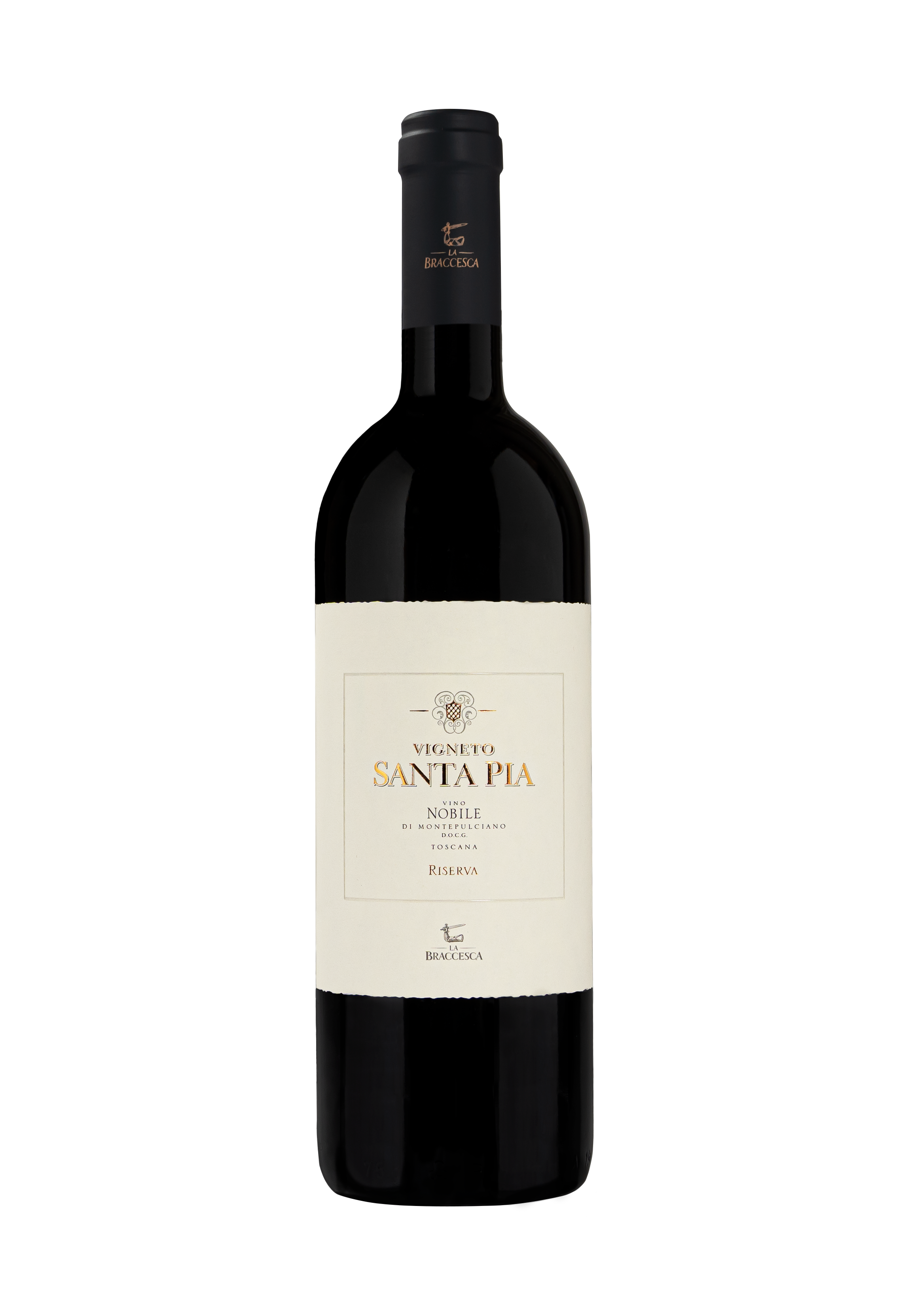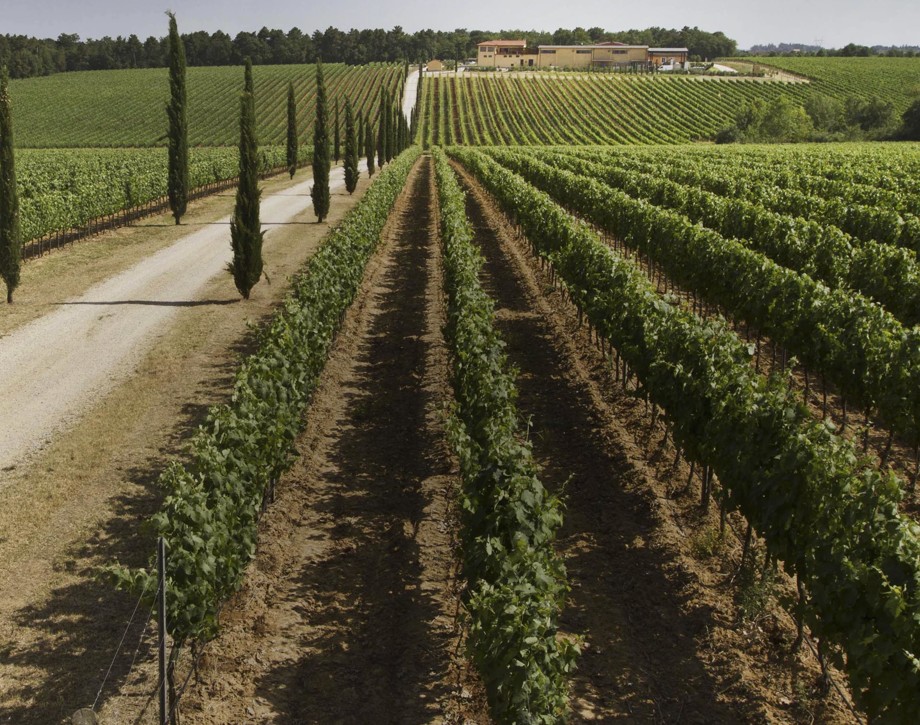Vigneto Santa Pia

Climate
Autumn saw mild temperatures with scarce precipitation followed by winter 2016 that started out with warm dry weather. These climatic conditions persisted until the end of March and determined bud break 10-15 days earlier than average. Temperatures cooled off at the end of April slowing down shoot growth, partially counterbalancing premature growth. The first half of summer was rainy accompanied by cool temperatures. Halfway through July, a hailstorm struck the area causing some damage to vineyards facing southwest. However, berries were still at an early stage of development and damaged grapes were promptly removed from the vines therefore we were able to harvest perfectly healthy grapes although quantities were slightly lower. The month of August brought beautiful weather and excellent temperature fluctuations between day and night; conditions that allowed a normal, gradual ripening phase and optimal development of phenolic and aromatic compounds. Harvesting of Sangiovese began at the end of September.
Vinification
Grapes were brought to the cellar and immediately destemmed and gently crushed. The must was transferred to stainless steel tanks where alcoholic fermentation occurred at a controlled temperature of 26-28 °C (80-82 °F), a method that preserves Sangiovese’s typical aromas. Maceration on the skins lasted for 20 days and upon completion of the process, the wine was transferred to 500 liter tonneaux for malolactic fermentation and barrel aging that lasted for approximately 12 months. The wine was then aged in bottles for an additional 20 months before being released for sale.
Historical Data
The La Braccesca estate covers some 1255 acres (508 hectares) where once were located the holdings of the Bracci counts, who gave their name both to the property and its count of arms: an armor-clad arm holding a sword. The overall vineyard surface consists of 850 acres (340 hectares) and is divided into two blocks: the first, 575 acres (233 hectares) is situated on the border between Montepulciano and the neighboring township of Cortona. The second, instead, 255 acres (103 hectares) insize, arrives close to the city itself and includes three highly renowned sub-zones for the production of outstanding red wine: Cervognano, Santa Pia, and Gracciano. Santa Pia is produced from a 37 acre (15 hectare) vineyard situated in the site of the same name, located the terraces below the town of Montepulciano. Its unique soil, medium in texture and consistence, rich in stones and sand, have assisted the ambition to produce an elegant, but at the same time classic, example of Sangiovese, one capable of transmitting the a highly recognizable expression of this historic production zone. The first year of production of Santa Pia was the 2001.
Tasting Notes
Santa Pia 2016 is an intense ruby red color. The nose is dominated by fragrant notes of violets, typical of Sangiovese, nicely balanced with spicy hints of vanilla. The palate is fresh, savory and vibrant with silky tannins. Its finish is lengthy, ample with a notable aftertaste of vanilla.
Awards
Wine Advocate 93/100 USA Galloni 93/100 USA

The Wine
Santa Pia is produced from a 15-hectare (37 acres) vineyard in an area called Santa Pia, located on the ridges just below the town of Montepulciano. This particular area has sandy loamy soils rich in rocky deposits known as “scheletro” that allow the Antinori’s to create an elegant yet traditional expression of the Sangiovese grape that reflects the characteristics of this historic winemaking area. The first vintage to be produced was 2001.

Climate
Autumn saw mild temperatures with scarce precipitation followed by winter 2016 that started out with warm dry weather. These climatic conditions persisted until the end of March and determined bud break 10-15 days earlier than average. Temperatures cooled off at the end of April slowing down shoot growth, partially counterbalancing premature growth. The first half of summer was rainy accompanied by cool temperatures. Halfway through July, a hailstorm struck the area causing some damage to vineyards facing southwest. However, berries were still at an early stage of development and damaged grapes were promptly removed from the vines therefore we were able to harvest perfectly healthy grapes although quantities were slightly lower. The month of August brought beautiful weather and excellent temperature fluctuations between day and night; conditions that allowed a normal, gradual ripening phase and optimal development of phenolic and aromatic compounds. Harvesting of Sangiovese began at the end of September.
Vinification
Grapes were brought to the cellar and immediately destemmed and gently crushed. The must was transferred to stainless steel tanks where alcoholic fermentation occurred at a controlled temperature of 26-28 °C (80-82 °F), a method that preserves Sangiovese’s typical aromas. Maceration on the skins lasted for 20 days and upon completion of the process, the wine was transferred to 500 liter tonneaux for malolactic fermentation and barrel aging that lasted for approximately 12 months. The wine was then aged in bottles for an additional 20 months before being released for sale.
Historical Data
The La Braccesca estate covers some 1255 acres (508 hectares) where once were located the holdings of the Bracci counts, who gave their name both to the property and its count of arms: an armor-clad arm holding a sword. The overall vineyard surface consists of 850 acres (340 hectares) and is divided into two blocks: the first, 575 acres (233 hectares) is situated on the border between Montepulciano and the neighboring township of Cortona. The second, instead, 255 acres (103 hectares) insize, arrives close to the city itself and includes three highly renowned sub-zones for the production of outstanding red wine: Cervognano, Santa Pia, and Gracciano. Santa Pia is produced from a 37 acre (15 hectare) vineyard situated in the site of the same name, located the terraces below the town of Montepulciano. Its unique soil, medium in texture and consistence, rich in stones and sand, have assisted the ambition to produce an elegant, but at the same time classic, example of Sangiovese, one capable of transmitting the a highly recognizable expression of this historic production zone. The first year of production of Santa Pia was the 2001.
Tasting Notes
Santa Pia 2016 is an intense ruby red color. The nose is dominated by fragrant notes of violets, typical of Sangiovese, nicely balanced with spicy hints of vanilla. The palate is fresh, savory and vibrant with silky tannins. Its finish is lengthy, ample with a notable aftertaste of vanilla.
Awards
Wine Advocate 93/100 USA Galloni 93/100 USA

Tenuta La Braccesca
The estate’s name comes from the historical farm that once stood there, owned by the Count of Bracci, whose coat of arms appears on the estate’s logo; an arm covered with armor brandishing a sword. Marchesi Antinori acquired the estate in 1990. The property extends over an area of 508 hectares (1255 acres) and the vineyards cover an area of 340 hectares (840 acres) divided into two blocks: the first is 366 hectares (904 acres) of which 237 (585 acres) are planted with vineyards and is located on the border between the cities of Montepulciano and Cortona. The other block is 142 hectares (350 acres) of which 103 (254 acres) are planted with vineyards, it extends all the way to Montepulciano encompassing three of the most famous parcels of land known for the production of great red wines: Cervognano, Santa Pia and Gracciano.

Soil
Sandy loam rich in very fine gravel.
















